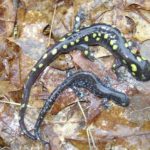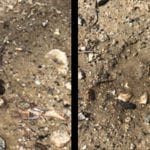Vernal pools provide important breeding habitat for select amphibians and insects, spiders, and crustaceans.
What Are Vernal Pools?
Vernal pools are typically small, temporary wetlands–often less than one acre. Even though vernal pools may only fill with water for a short time in spring and fall, and often dry out by mid-late summer, their ecological significance for wildlife plays a much larger role.
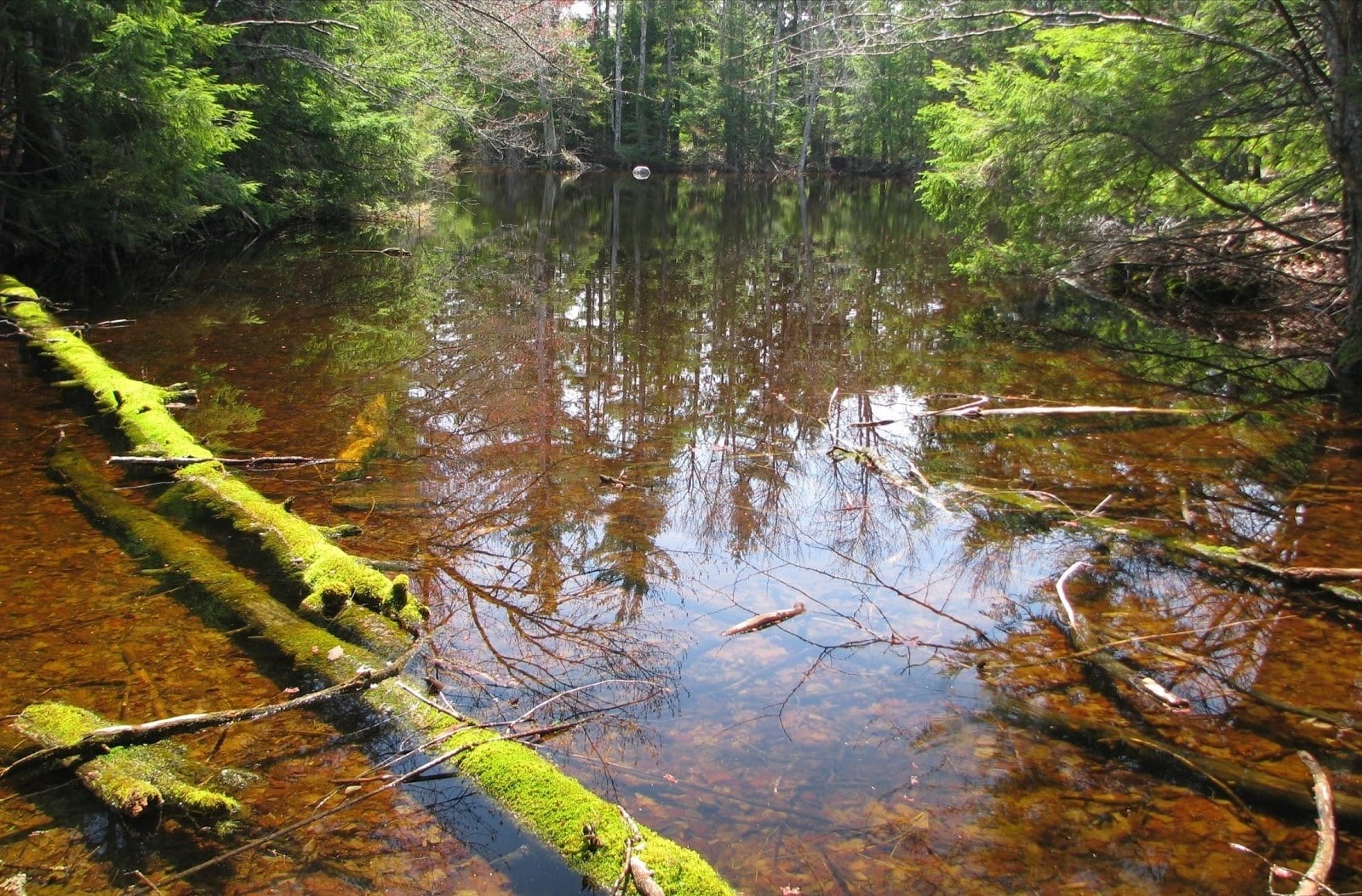
What draws these specialized species to breed in such temporary pools? It’s actually something the pools don’t have: fish and breeding populations of predaceous frogs like Green and Bull Frogs. Relatively isolated from streams and subject to periodic drying, vernal pools provide a breeding haven with greatly reduced predator populations for eggs as they develop into newly hatched frogs and salamanders.
Why Are Vernal Pools So Special?
Wood frogs, spotted and blue-spotted salamanders, four-toed salamanders, and fairy shrimp all experience higher rates of breeding success in vernal pools as compared with permanent waters. Other amphibians, such as spring peepers and American toads, also sometimes breed in vernal pools, and others use them for resting and feeding, such as gray treefrogs, green frogs, and bullfrogs, along with a myriad of reptiles, birds, and mammals – including garter snakes, great blue herons, raccoons, and even moose.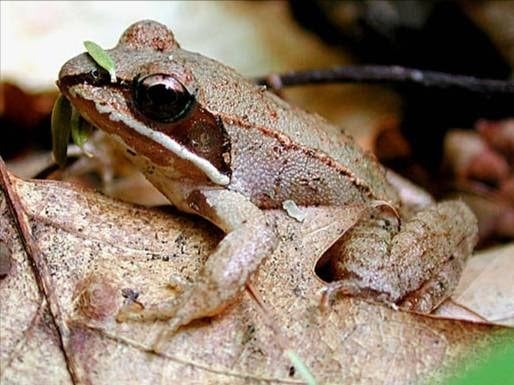 That’s because vernal pools provide a rich assortment of food, including egg masses; adult breeding amphibians, larvae, and emerging young; fingernail clams and predatory diving beetles; and fresh spring vegetation emerging before frozen lakes and ponds even thaw.
That’s because vernal pools provide a rich assortment of food, including egg masses; adult breeding amphibians, larvae, and emerging young; fingernail clams and predatory diving beetles; and fresh spring vegetation emerging before frozen lakes and ponds even thaw.
In late summer, when the pool is dry or nearly dry, all this life either dies off, becomes dormant, or moves into the surrounding upland. Young wood frogs and spotted and blue-spotted salamanders leave the pool and head into the forest, where they spend most of their life. Wood frogs may move into forested wetlands for the rest of the summer and then to upland areas to overwinter under the leaf litter. Salamanders move into shrew burrows or other tunnels where they “sit and wait” for food to walk past while they are safely hidden from most predators. The amazing amount of life emerging from these pools each year exceeds that of all the neighboring birds and small mammals combined on a per acre basis, and thus provides an important food source for larger animals from the surrounding forest, including raccoons, coyotes, snakes, hawks, turkeys, and numerous other predators.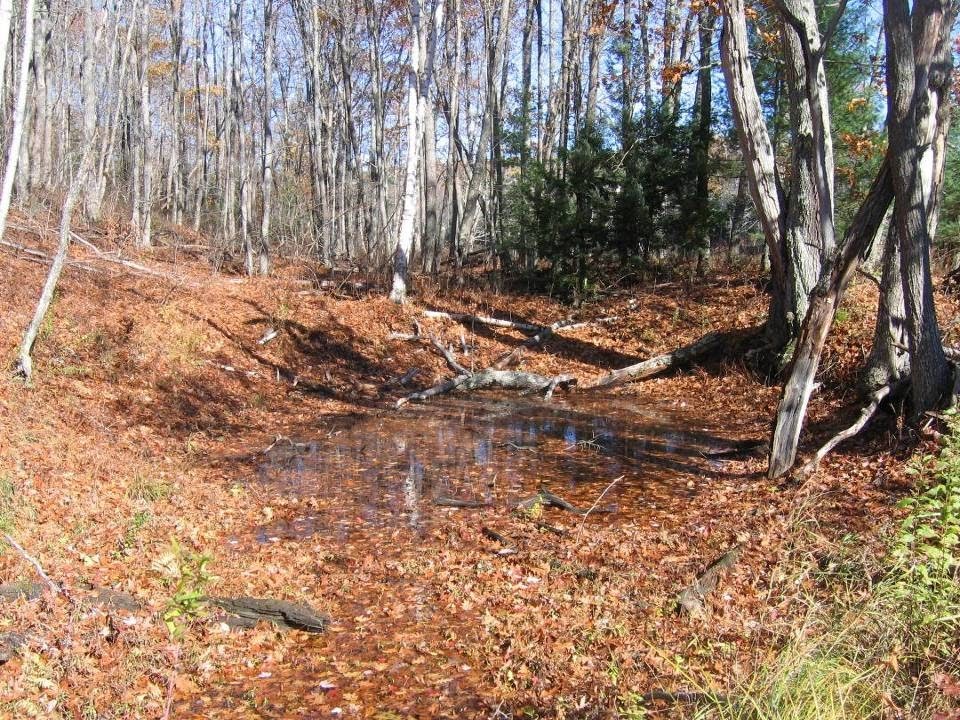
Photo: Almost dry summer pool
Are Vernal Pools Protected?
The same temporary nature that makes vernal pools unique breeding habitat also puts them at high risk of habitat loss and degradation, especially from development. Without water for much of the year, vernal pools can be easy to miss. They can also fall through gaps in existing state and federal wetland regulations that are better designed to protect larger, more permanent wetlands. The ‘cream of the crop’ vernal pools in Maine qualify as Significant Vernal Pools under the Natural Resources Protection Act (NRPA), and as such there can be no development in the pool itself and limited development around the pool, but the rules don’t protect the full suite of habitats that vernal pool wildlife use, including breeding, summering, and wintering habitats. Many others pools that harbor wildlife don’t receive any protection under the NRPA, and recent changes to federal wetland rules leaves most vernal pools without any protection.
What Else Can Be Done?
There are many ways to help vernal pool ecosystems. Regulation is just one of them. That’s why Maine Audubon, along with the University of Maine, state and federal agencies, and others, have worked hard over the past 20 years to find multiple ways to help conserve these amazing wildlife havens, such as: (1) training and supporting volunteer community scientists to find and survey vernal pools; (2) providing towns with the educational resources, training, and technical support they need to identify, survey, and map vernal pools in their community; (3) creating and presenting talks on the Ecology and Conservation of Vernal Pools for a variety of audiences; (4) developing and passing rules to protect Significant Vernal Pools; (5) creating guides for community scientists, municipalities, developers, and foresters to conserve and manage vernal pools; (6) establishing a special municipal program for conserving vernal pools in the rural parts of town; (7) creating a Stewardship Award to recognize landowners who go beyond the minimum to help conserve vernal pool wildlife; and (8) support ongoing research on vernal pool ecology to help inform best conservation and management practices.
Are you going above and beyond the minimum requirements to conserve vernal pools on your property? Stay tuned for more information on earning a Stewardship Award for your property or organization.

Interested in learning more?
Our guidebooks for community members, homeowners, municipalities, and forest landowners are full of helpful information on the ecology and conservation of vernal pools and the wildlife that use them. You can find and peruse them all here.
What qualifies as Significant Wildlife Habitat and why is it so important? You can find the answers here. Significant Wildlife Habitat rules are a valuable tool for increasing protection of Maine’s most important wildlife habitats, including vernal pools, and to balance that protection with well-planned development.
Love science and natural history? Interested in teaching your kids about vernal pools? Want to connect with other professionals? If you would like to learn more about vernal pool ecology, conservation, research, and management, or access research papers, researchers, conservation guides, or educational materials for both adults and kids, please visit the Of Pools and People website. Have fun exploring!
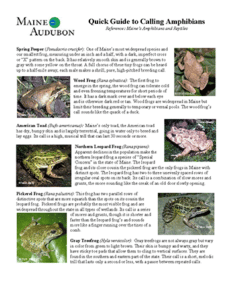 Brush up on your amphibian identification! We’ve got a Quick Guide to Calling Amphibians to help you how to tell a Spring Peeper from a Green Frog from an American Toad!
Brush up on your amphibian identification! We’ve got a Quick Guide to Calling Amphibians to help you how to tell a Spring Peeper from a Green Frog from an American Toad!
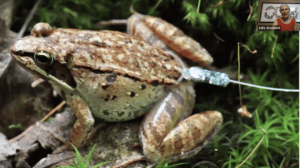 Watch this presentation
Watch this presentation
Maine Audubon Director of Conservation Sally Stockwell gives a presentation on the ecology and conservation of vernal pools (originally presented to Sunrise Senior College, June 2021). Watch the video >
More information

